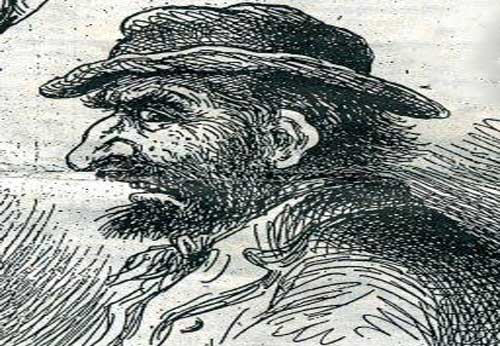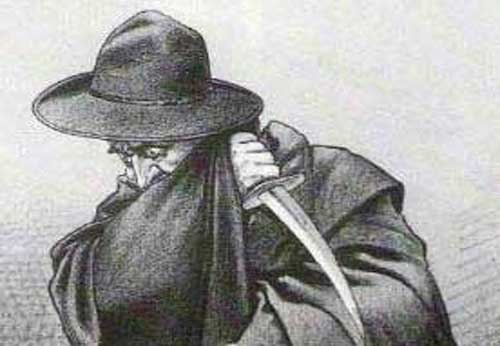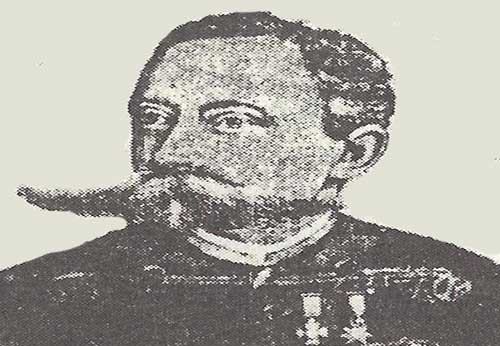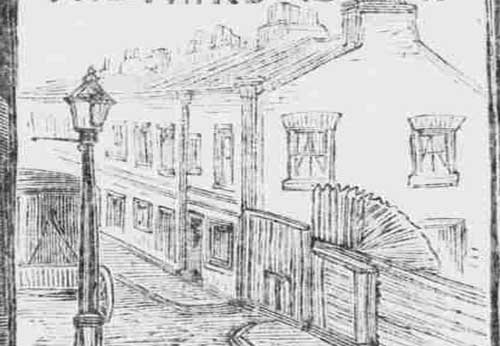- Liverpool businessman James maybrick died of arsenic poisoning in May, 1889.
- His wife, Florence, was later found guilty of his murder.
- In 1992 a journal, which, it was claimed, was written by James maybrick, in which he claimed to have been Jack the Ripper..
- His viability rests almost solely on the authenticity of this mysterious diary.
- Site Author and Publisher Richard Jones
- Richard Jones
JAMES MAYBRICK - THE DIARY OF JACK THE RIPPER

THE LIVERPUDLIAN COTTON MERCHANT
In 1992 Michael Barrett, a former Liverpool scrap metal merchant, produced a journal which, he claimed, had been given to him by a friend, Tony Devereux, in a pub the previous year.
Although the author of the diary doesn’t actually identify himself by name, it is quite obvious from various personal references, and from other information contained within the journal, that the diarist is meant to be the Liverpool Cotton merchant James Maybrick.
Maybrick died in May 1889 and, shortly after his death, his wife, Florence, was arrested and charged with murdering him by poisoning him with arsenic.
WHY HE STARTED MURDERING
In the diary, the author makes the claim that he had seen his wife - whom calls “the bitch,” or “the whore” in the pages of the diary - with her unnamed lover in the Whitechapel district of Liverpool.
The subsequent rage that he experienced following this sighting sent him on a murderous rampage in the Whitechapel district of London in the course of which he mutilated and killed five prostitutes.
THE AUTHOR DESCRIBES THE MURDERS
The journal contains a somewhat long-winded description of the murders before ending with the assertion "I give my name that all know of me, so history do tell, what love can do to a gentle man born. Yours truly, Jack the Ripper."
A TOTALLY NEW JACK THE RIPPER SUSPECT
Up until the emergence of the diary there had never been any suggestion that James Maybrick may have been Jack the Ripper and the only real evidence against him as a suspect is his own supposed confession in the pages of his diary. So his viability as a Jack the Ripper suspect comes down to whether or not he wrote the diary and, if he did, does what he writes about his crimes correspond with the known facts.
DIVIDING THE RIPPEROLOGISTS!
It has to be said that the provenance of the diary has proved a hugely dividing issue amongst Ripperologists and thus the path to proving the guilt, or innocence, of James Maybrick as a viable Jack the Ripper suspect has been anything but straightforward.
IT MIGHT BE GENUINE
The first reaction from experts on examining the diary was encouraging. Several of them agreed that, if nothing else, it was most certainly of the correct period to have been written by James Maybrick.
But they also made it plain that a far more thorough forensic analysis was needed in order to establish exactly when the journal was written and it was at this point that the scientific data became somewhat blurred and contradictory.
MICHAEL BARRETT CONFESSES HE FORGED IT
A further set back to establishing the authenticity of the diary came when Michael Barrett informed the Liverpool Post that he had in fact forged the diary.
HE RETRACTS HIS CONFESSION
However, he then withdrew his confession and, in addition, his wife, from whom he was by then separated, stead that the diary had in fact been in her family's possession since the Second World War.
So the jury is still very much out on whether or not the diary's authenticity has been scientifically proven.
DETAILS WITHIN THE DIARY
So how about the actual details about the crimes that are contained within the pages of the diary? Do they demonstrate that the author did indeed have first hand knowledge that could have only been known to the perpetrator of the Jack the Ripper crimes?
Well, in a word, no!
COMMON FALLACIES AND MISCONCEPTIONS
It is apparent on close scrutiny of the diary that many of the descriptions of the crimes and the crime scenes are actually taken from press reports and later accounts of the Jack the Ripper murders and that, because of this, the journal replicates some of the widespread inaccuracies and errors with regards the Jack the Ripper Murders.
WHAT HE SAYS ABOUT MARY KELLY'S MURDER
As far as the murder of Mary Kelly goes, for example, the author gloats over how he placed parts of her body all over her room, and goes into sickening details of how he had cut off her breasts and, having kissed them for a while, he set them down upon the bed side table.
The idea of Mary Kelly's body parts being spread all over the room (or, in some accounts, being "hung around the walls like Christmas decorations") is most certainly not the case and. There is no denying the fact that the murder scene inside 13 Miller's Court (where Mary Kelly's body was discovered) was horrific, but the mutilated body parts were, on the whole, confined to the bed and its immediate vicinity and had most certainly not been strewn, or even strung, around the room. Indeed the police and other official reports make it obvious that this was demonstrably not the case.
Likewise, her breasts were not placed on the bed side table, as is stated by the diarist but were, in fact, found beneath her body.
These are just two examples of common fallacies and misconceptions concerning the scenes of his crimes and which, therefore, suggest that the diary was not written from the author's having any first hand experience of the crime scenes but rather from him (or her) having read inaccurate accounts and descriptions of the crime scenes. Combined these tend to cast doubt on the author's viability as a Jack the Ripper suspect.
JACK THE RIPPER'S WATCH
There is, however, another intriguing piece of memorabilia that links Maybrick to the Jack the Ripper crimes.
In 1993 Albert Johnson purchased an antique gold watch on the inside of which he found scratched the initials of Jack the Ripper’s five victims, together the signature J. Maybrick, and the words "I am Jack."
As with the diary, the watch has been subjected to scientific analysis and the scratches have been found to be compatible with the period 1888 to 1889, although these findings have been disputed.
But the sudden appearance of the watch, so soon after the diary was made public aroused a great deal of suspicion, and, whereas it is possible that they were both created at the same time, their usefulness in proving Maybrick’s guilt depends on proving that they are genuine, and this has never been satisfactorily done.
IS HE A VIABLE JACK THE RIPPER SUSPECT?
The arguments both for against the viability of James Maybrick as a Jack the Ripper suspect continues, and although the general consensus is that the diary is a forgery - although whether it is done in the 19th or a late 20th centuries is still contested.








